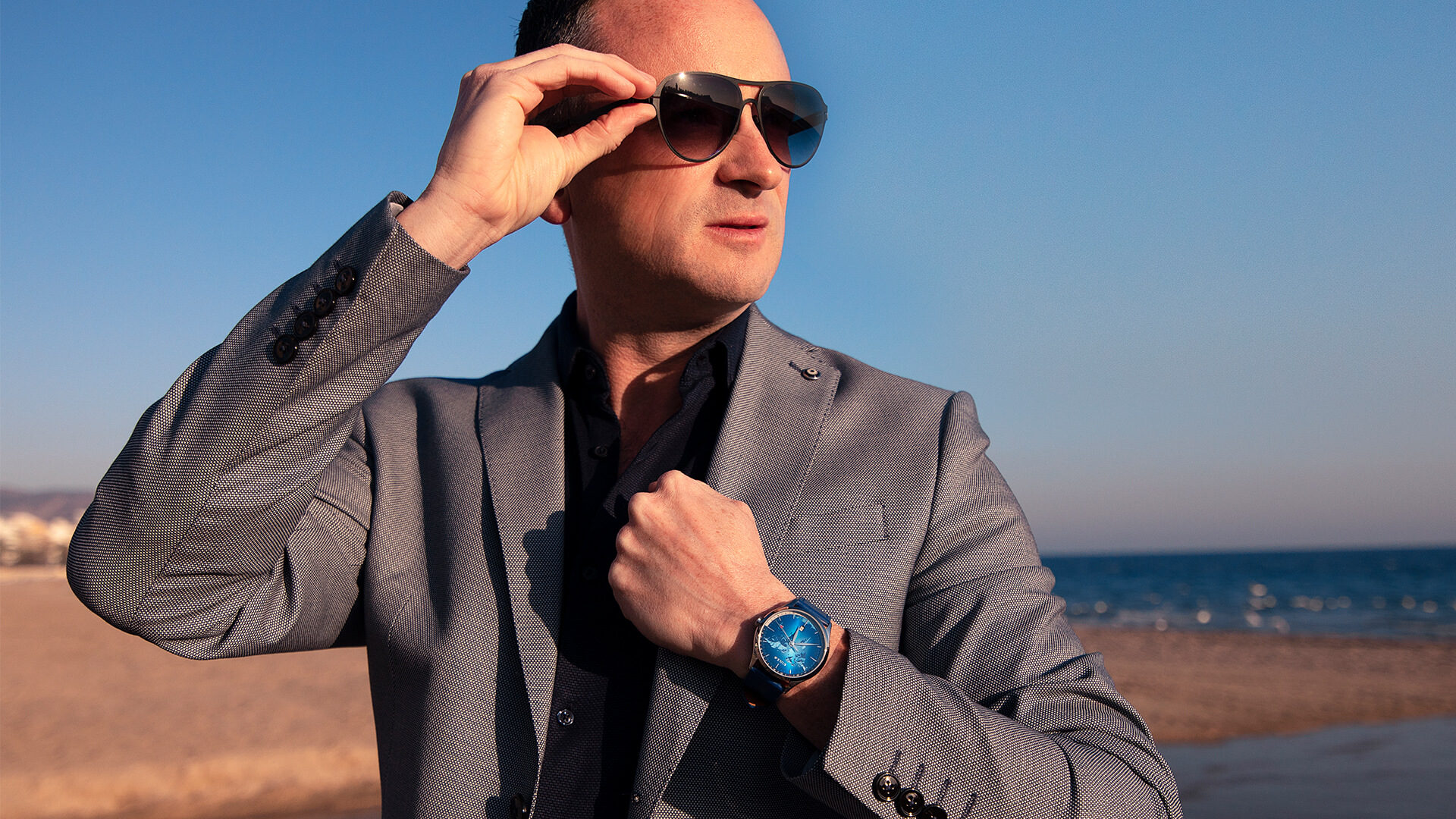By Matthew Cule, Founder of CuleM Watches
Technology, innovation, AI, affordability; not necessarily terms associated with the luxury watch industry.
Indeed, the Swiss watch industry has dominated ever since the 1800s when farmers assembled handcrafted mechanical watches during harsh winter months. Today Swiss watches are synonymous with luxury and prestige but how can the Swiss watchmaking industry both survive and thrive in today’s world?
It needs to remain relevant!
The ability of artificial intelligence (AI) to drive intelligent marketing has begun to evolve the watch industry as we know it. Emotional Analytics (EMO), a Singapore-based start-up based, for instance, uses artificial intelligence to group data from billions of social content updates into topics of interest by mapping out the emotional engagement with each topic.
This insight can help ensure data-driven growth for industry players. For instance, EMO recently studied new watch brands with a price point below $500. This revealed some very interesting insights that watch brands can capitalise on to ensure they’re creating watches that people really want. For example; people have a strong preference for Swiss automatic watches, like diving, pilot, and dress watches; they prefer 42mm watches or small 38mm watches and have a neutral opinion about 40mm watches; nato and rubber straps are the most popular; and the most popular colours are blue and black. This kind of insight can help reduce the risks when launching a new watch, enabling a brand to combine innovation with design aspects that consumers want.
Baselworld has long been the most important event of the industry’s calendar, and while I enjoy the palpable, passionate energy of Baselworld, many independent watch brands are choosing to forego the show altogether in favour of investing in contemporary online marketing channels. Exhibitions need to embrace the future and new technology if they are to remain relevant and attract the visitors that will make the cost of exhibiting worthwhile.
Unfortunately for Baselworld, it’s not the only industry player which can offer behind-the-scenes access to new watch innovations and releases. Social media influencers, for instance, can target millions of people in a way that can be tracked and analyzed for impressions, engagement and efficiency. Therefore, Baselworld must now reconcile its iconic existence connecting passionate collectors and watchmakers with novel forms of marketing and technology.
For instance, perhaps it could consider live streaming more of its sessions, or enabling exhibiting watch brands to host sponsored webinars for global audiences. More and more conferences are selling to an online audience as well as the offline visitors. Issues of time, the impact of travel on the environment, and the cost of visiting are all eroding visitor numbers, but an event can still be a huge success if it embraces the online world; opening up to virtual visitors from across the globe. Leveraging AI and new innovations in communications technology, Baselworld can ensure its offline event generates a wealth of digital data. In so doing, Baselworld may be able to offer independent brands actionable insights from one of the most valuable microcosms of the watch industry.
Has technology has transformed what collectors want from a watch?
Apple watch, and others of the same ilk, may have revolutionized watchmaking. Millions of consumers are investing in the convenience of having a mini-computer strapped to their wrist. Why wear a watch that can only tell the time when a smartwatch can answer your calls, text your friends and track your fitness goals?
However, for watch collecting aficionados, a smart watch is the equivalent of a factory van to an exotic car collector – it entirely misses the. Even watches that integrate traditional craftsmanship with the functionality of digital technology will fail to capture the attention of true collectors.
In fact, classical watchmakers have an opportunity to capitalize on and appeal to an emerging market of watch collectors: a generation that grew up with technology and rejects its omnipresence. A growing swathe of people reject wearables that ‘ping’ us away from the present moment. Time is a treasure, and while a watch can keep time, it shouldn’t control it.
Conversely, consumers have come to expect a curated, technology-driven discovery and buying experience. A magazine advert can now include augmented reality (AR) links, which mean if you put your phone over a photo, an immersive video about the watch can begin to play. We have developed an app so that users can try on all the watches in our first collection from their desk or dining room table. By utilising new technologies watchmakers can reach new, wider audiences, and can help consumers ‘try on’ a watch – even if they are nowhere near a retail outlet. This can lead to increased sales and help a traditional brand reach a tech-savvy audience.
Will innovation drive demand.
The Swiss watchmaking industry is full of staggeringly creative and talented people, but they often work for organisations driven by the bottom line and relying on their reputation and heritage – not their innovation. I believe that an overreliance on profits translates into lost creativity and a tired routine of re-releasing best-selling models.
Take Google, for example, which encourages its employees to focus 20% of their time on side projects. For watchmaking talent, even a few hours a week focused on creativity and lateral thinking can lead to the uncovering of new and innovative designs that can transform a brand, and its earnings.
Watch brands that seize the opportunity to make the ideas of the past relevant in the 21st century are more likely to cement their place in the industry and its future. By looking to the future, rather than to the past, the watch industry has an opportunity both to remain relevant and to reach new consumers. By constantly looking backwards at design, it will fail to achieve either.
Luxury watch collecting can be an investment within reach
Luxury watches combine high-end Swiss craftsmanship and timeless design into a desirable object that will stay with collectors for decades to come. But they have an implied cost.
Although price points for Swiss-made automatic watches can exceed 100,000 euros, watch collecting is no longer an investment beyond reach. Advancements in manufacturing and factory-direct retail business models have opened up luxury watch collecting to new markets.
And it’s not about cutting costs or quality – it’s about finding new, innovative ways to sell direct to the customer, eliminating traditional retail outlets with large mark-ups, and delivering the savings to the customer.
For example, we looked at how to cut out the retailer and sell direct from the factory and thus launched on Kickstarter. We did this because we wanted to ensure that everyone had access, not just those with six-figure salaries
By looking at innovative ways to connect with customers, and reduce costs without compromising on design and quality, there is an opportunity for start-up brands to create another tier in the watch collector market, attracting new buyers with a slightly lower price-point.
Of course there will always be a place for the very high end watches like Vacheron Constantin or Laurent Ferrier, but micro-brands in the 2,000 to 5,000 euro retail price point will be fierce competitors as consumers seek value, relevance, and an alternative to the status quo.
Read more about CuleM Watches here.




















